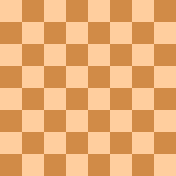
- Chess World Cup
- FIDE Grand Prix
- Olympiad
- World Championship
- List of strong tournaments
- List of world championships

- Checkmate patterns
- Chess openings
- Chess strategy
- Chess tactics
- Chess theory
- Endgames
- Pawn structure
- Problems/Compositions












| a | b | c | d | e | f | g | h | ||
| 8 |

         |
8 | |||||||
| 7 | 7 | ||||||||
| 6 | 6 | ||||||||
| 5 | 5 | ||||||||
| 4 | 4 | ||||||||
| 3 | 3 | ||||||||
| 2 | 2 | ||||||||
| 1 | 1 | ||||||||
| a | b | c | d | e | f | g | h | ||
The zebra is a fairy chess piece that moves like a stretched knight. When it moves, it can jump to a square that is three squares horizontally and two square vertically, or three squares vertically and two square horizontally, regardless of intervening pieces; thus, it is a (2,3)-leaper. Below, it is given the symbol J from Betza notation.
| a | b | c | d | e | f | g | h | ||
| 8 |

                                                                |
8 | |||||||
| 7 | 7 | ||||||||
| 6 | 6 | ||||||||
| 5 | 5 | ||||||||
| 4 | 4 | ||||||||
| 3 | 3 | ||||||||
| 2 | 2 | ||||||||
| 1 | 1 | ||||||||
| a | b | c | d | e | f | g | h | ||
The zebra by itself is worth just below two pawns (appreciably less than a knight), due to its restricted freedom of movement on an 8x8 board. Its larger move is the main reason why it is weaker than a camel on an 8x8 board, even though the camel is colorbound and the zebra is not. A zebra and a bishop and a king can force checkmate on a bare king; while a zebra, a knight and a king cannot; and a zebra, a camel, and a king cannot. The rook versus zebra endgame is a win for the rook. (All endgame statistics mentioned are for the 8x8 board.)
As a component of other pieces, it has about the same value as a knight (both pieces can move to eight squares), but its long move carries the danger of causing unstoppable attacks in the opening and winning large amounts of material. Ralph Betza opined that the zebra's move was too large to be functional on an 8x8 board, and that only on a 10x10 board or larger would it be worth its ideal value of about a knight.